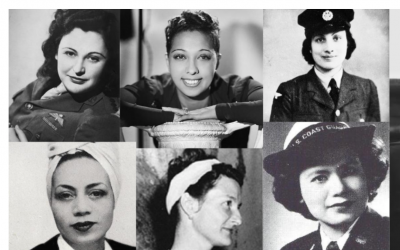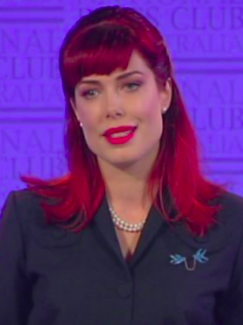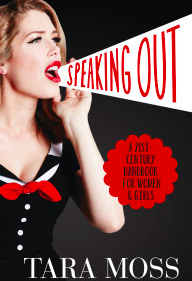It’s World Breastfeeding Week, a time to celebrate breastfeeding and reflect on how far we’ve come, particularly since the early 70’s when many mothers were incorrectly told in hospital that formula was as good as or even superior to their own breast milk, and before ethical standards were imposed on the advertising of artificial milk for babies. American breastfeeding rates, for example, experienced their record low in 1971 when only 21% of the population breastfed their infants at birth. (As of 2004, 74% of American babies received at least some breast milk according to The Centers for Disease Control and Prevention, a huge improvement.)
So where are we at in Australia in 2012?
Thankfully through good support and education we have achieved moderately higher rates of breastfeeding here than in the US and the UK, though we still have a long way to go. Although The World Health Organisation, the Australian government and our nation’s medical experts recommend exclusive breastfeeding for the first six months as protection against disease, only 15% of our children receive that protection, up from 14% last year. That is less than half the world average.
Now with mounting research showing the value of breastfeeding to protect against a range of diseases, (including a lowered risk of cancer for mums) and new changes to Australia’s safe sleep guidelines explicitly recommending breastfeeding as a proven way to dramatically to reduce the risk of sudden infant death syndrome, it is little wonder more than 9 out of 10 Australian women want to breastfeed.
96% of Australian women initiate breastfeeding, however, by 4 months of age only 27% of babies are exclusively breastfed and crucially, according to the latest Infant Feeding Survey conducted by the Australian Institute of Health and Welfare, most women quit breastfeeding before they chose to, indicating that external forces are at work.
Many women do not receive adequate support to continue breastfeeding, and unfortunately, there are stark socioeconomic disparities, with younger mums, those who are less-educated, of a lower-income, or indigenous all less likely to breastfeed and more likely to quit early – a pattern we see across Australia and the US, despite the fact that families in lower-socioeconomic groups are those who would most benefit financially from feeding their children for free for the first six months of life, rather than having to rely on expensive formula.
So what can we do to help women who choose to breastfeed?
Breastfeeding support and education needs to become more consistent and widely available across the country. That’s a major priority for the Baby Friendly Health initiative (BFHI) from the World Health Organisation and UNICEF, which works to ensure the best standard of evidence-based care is provided for mothers and babies, with proven success in helping women achieve their goals of breastfeeding their babies successfully, and for longer.
We also know that returning to work remains a barrier for many mums. A program called Breastfeeding Friendly Workplaces is battling against that by encouraging businesses to allow breastfeeding breaks or to have a place to pump and store expressed breast milk at work, all of which makes good ethical sense and good business sense.
Unfortunately, despite the health push to breastfeed, many Australian mums remain nervous about breastfeeding in public, especially in the early weeks when routines are not well established. Mums are still frequently told to cover up or “be discreet”. One breastfeeding mother I know uses only bottles of her expressed breast milk in public, to avoid embarrassment.
Personally, I support anything that helps mums cope with the challenges of parenthood, but it is perhaps a sad sign of the times that doing what is natural (and free) is a challenge for so many, and confronting for so many others.
I clearly recall my first outing at a cafe with my daughter. She became restless and needed feeding, so out came the blanket. I couldn’t see what she was doing, and our mother-baby attachment skills were not well honed, to say the least. I kept adjusting her. She began to sweat beneath the blanket. The wind kept flipping it off. In the end I had to ask myself why I was covering my baby’s head. Her needs were more important than the risk of flashing a nipple.
As if the topic were not sensitive enough, the very sight of breastfeeding remains inexplicably controversial. Take the recent cover of Time magazine as an example. The now infamous cover featured a mum feeding her three-year-old. The image was hotly debated for a variety of reasons, most of which centred on the issue of public breastfeeding and the idea of feeding past age one, despite the World Health Organisation recommending all mothers breastfeed to two years and beyond.
But you don’t need to be feeding a three-year-old to cause offence. US actor Angelina Jolie’s appearance on the cover of W magazine in 2008, breastfeeding one of her twins in a modest black and white photograph taken by her partner, Brad Pitt, caused a furore. Her baby was a newborn, the image showed no cleavage and no, her child was not standing on a chair, as on the cover of Time.
Similarly, last year a natural-looking photograph of supermodel Miranda Kerr breastfeeding son Flynn caused mixed reactions of praise and disapproval, while provocative photographs of her in lingerie and swimwear don’t cause so much as a whiff of controversy.
Images of breastfeeding are still routinely flagged as offensive on Facebook and banned.
The reaction of many seems to be: “Sure breastfeeding is fine, but I don’t want to see it!” The thing is we have to see it. Babies feed every few hours, and it is not reasonable, healthy or legal to demand that mothers hide away every time they need to give their children sustenance.
Unfortunately, while we have become accustomed to seeing the fertile female body used to sell us all kinds of products, we are no longer accustomed to seeing it perform this most natural task.
Though anti-discrimination laws protect a woman’s right to breastfeed, without normalising the sight of breastfeeding in our society we have little hope of making more mothers comfortable enough to engage in the practice, or continue it once life inevitably involves taking a hungry baby out of the house.
Not all women can breastfeed, but the vast majority can and want to. When mothers make informed choices, let’s respect those choices, regardless of whether that means breastfeeding or bottle feeding, or styles of parenting we don’t agree with. And for the majority of Australian women who do choose to breastfeed, let’s give them our unreserved support in the healthcare system and at work, but also in the community, so they can develop healthy, long-lasting breastfeeding relationships with their children.
As we celebrate World Breastfeeding Week 2012, let’s look forward to a time when most Australian women are able to wean their children when they choose to, regardless of whether they are working mothers or not, and a time when public breastfeeding is treated as the healthy, normal and utterly uncontroversial thing that it is.
Tara Moss is UNICEF Australia Patron for Breastfeeding for the Baby Friendly Health Initiative.
Read more at UNICEF: ‘Tara Moss calls for more support for mums and babies during World Breastfeeding Week’.
PS If you are struggling to breastfeed, remember you are not alone. Speak to your midwife, doctor, local hospital or lactation consultant, or use free volunteer support services like the National Breastfeeding Helpline by calling 1800 Mum 2 Mum. Sometimes the right piece of advice at the right time can be enough to smooth the way.





Great advice Tara – thanks for writing this.. lets hope many people – men, women breastfeeding or not – read this article. Our mums groups finds it difficult to find cafes that are supportive of breastfeeding mums who want to have a life outside of their own house whilst caring for their bubs.
A timely post. A supportive partner & family helps women to continue breast feeding longer. I’ve been a big beneficiary of that as has my daughter. Love your advocacy & support – keep up the fabulous work xx
Yes! And if we all had access to lactation consultants in those precious few days in hospital I think our success rate would be higher. I asked for one and was told it couldn’t happen. I was determined to breastfeed but had a baby who had difficulty attaching, I was in agony and I was sent home, as most are, before my milk had come in. I faced a really uphill battle when I went home, so I can completely understand if you’re only half hearted about breastfeeding that it would have been easier to give up. And then a kind nurse gave me a nipple shield. Hallelujah. I know the Breastfeeding Association frown upon their use but bloody hell it helped me get through those tough times. My baby weaned herself off the shield in her own time and now I have a very happy breastfed 1 year old.
I found that there was heaps of information and support for establishing breastfeeding, but little information or support for when you are 3 or 6 months down the track. You still have hurdles to overcome, but there is nothing. Rarely is it the case that once you get started then everything is fine and goes smoothly. Don’t talk to be about that phone hotline: it takes forever. So if you want to get women breastfeeding for longer SUPPORT THEM with information and help!
Hi Amanda, I’m sorry you had a bad experience with the helpline, did you know the governent only funds the phones, all the counsellors are unpaid volunteers. They do say try again if you don’t get through and the ABA website and forum are also very helpful, I tho you’re absolutely right, that more resources and support is needed throughout the bf journey.
Elly, just to let you know ABA doesn’t frown on nipple shields, indeed ABA recognises that they can be an excellent tool used appropriately. Unfortunately, for some mums they can make things worse. Ideally if a mum requires a nipple shield, good knowledgeable help from a health professional or breastfeeding counsellor should also be available for her,
For the women needing more advice for down the track in your breastfeeding journey, I found http://www.kellymom.com to a very useful and well researched site.
I just wanted to point out a interesting historical example spotted in this WW1 Diary of public breastfeeding being criticised and defended.
http://ewmanifold.blogspot.com.au/2012/10/diary-entry-17th-october-1917.html
English Officer gets all hot under the collar about a French mother breastfeeding in a cafe. Australian (the diarist) points out he’s out of line.
Thank you Tara. Great to hear such informed comments that include so much empathy. You only need to listen to the recent comments by David Koche (why breastfeeding in public should be done in a “discreet” and “respectful” manner) to know that we still have a long way to go. Also, when mentioned the Koche incident was discussed on The Project (TV) there was no one who spoke out in support of breastfeeding mums. “Lets move onto something more serious”. Well – for me this is a very serious issue.